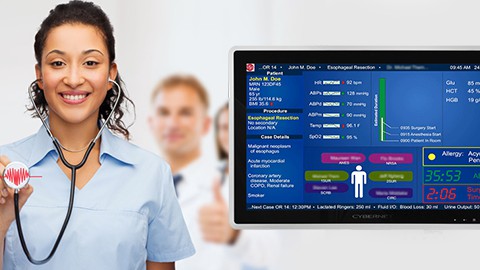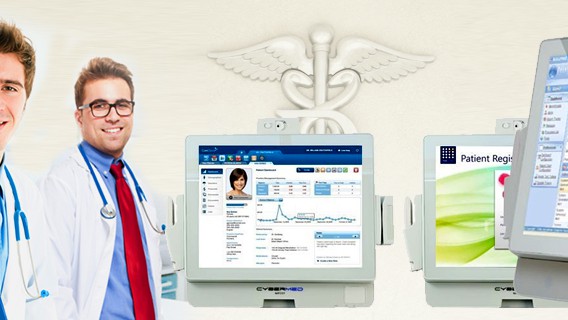There’s no denying that waste abounds in the American healthcare system. Nowhere is this waste more pronounced than in busy hospital Emergency Rooms. After all, according to Michellene Davis, Executive Vice President at RJWBarnabas Health, “the emergency door is the most expensive entrance into the hospital, any hospital.” Combined with the fact that 90% of symptoms that prompt Emergency Room visits for adults overlap with symptoms of non-urgent conditions, you can see why ERs, in particular, are prone to waste.
However, some ideas to address this problem are better than others. Take a recent policy announced by insurance provider UnitedHealthcare in which they will reject all claims for emergency room visits it deems to have been for non-emergency purposes. We try not to editorialize on this blog, but there’s no way around it: this is a bad policy.
As many patient advocacy groups and professional healthcare guilds have correctly pointed out, most patients cannot tell if their symptoms are due to a genuine medical emergency or the result of something less urgent. Not only that, Emergency Rooms are usually open 24 hours while other facilities like urgent care clinics have limited hours. If a patient experiences symptoms late at night, the Emergency Room may be the only option available.
While UnitedHealthcare is thankfully delaying the start of this policy after public backlash, they are not the first insurance company to implement such a policy – Anthem introduced a similar policy a few years ago – nor is it likely that they will be the last. So, what can hospitals and Emergency Room operators do themselves to reduce ER waste and make such policies less attractive to insurers?
Reducing ER Waste With Medical Computers and Tablets
Article Guide
As we’ve discussed on this blog before, digital technology is rapidly remaking healthcare as we know it. We’re not just talking about “going paperless” either. Everything from the way we conduct patient exams to how we manage hospital beds is changing. Naturally, this technological revolution has the potential to change emergency care for the better as well.
However, this blog is a bit different. While it’s fun to imagine how technology will enable healthcare providers to reach more people at lower costs, the threat of more insurance companies introducing policies like UnitedHealthcare’s add an extra level of urgency to these changes.
Below are some of the ways technology like medical computers, the Internet of Medical Things, telehealth, and medical tablets can help eliminate waste spending in Emergency Rooms.
IoMT and Home Triage
It’s generally not considered reasonable to expect non-medically trained laypeople to know if their symptoms are genuinely an emergency or something less immediately urgent. While in some cases it may be obvious (like in the case of grievous bodily injury), many times, even in cases of severe and painful symptoms, there’s just no way to know if you should go to the ER, an urgent care clinic, or just sleep it off. So, of an abundance of caution, many patients choose to go to the ER, only to find out upon arrival that their symptoms were less severe than they had feared. Accordingly, the Federal “Prudent Layperson Standard” in the United States codifies this idea into law.
But what if there were some way to examine a patient BEFORE they came into the ER? Well, thanks to the Internet of Medical Things, this kind of home triage is now possible. As we’ve discussed on this blog before, the Internet of Medical Things (IoMT) is a network of medical devices that can collect medical data digitally and share it via the internet.
With the IoMT, a patient can check their temperature, pulse, lung capacity and perform an ear and throat exam, all with a single handheld device. Via the internet, the device then sends that information to a doctor or nurse practitioner. The provider can then triage the patient remotely and determine if they need to come into the emergency room, seek care elsewhere, or just sleep it off. It sounds like science fiction, but there are already multiple such products on the market.
Sorting out true emergencies from less severe health scares BEFORE the patient even sets foot in an ER will go a long way to not only reducing waste spending on emergency medical services and help render punitive policies like UnitedHealthcare’s irrelevant.
Ambulances & Medical Tablets
Crowded emergency rooms where people have to wait hours to be seen have long plagued major cities across the globe. Of course, this kind of ER environment breeds all types of waste. If there were a way to reduce this crowding and quickly process people through the system, you could significantly cut down on emergency room costs. Luckily, there is a whole class of In Hospital IoMT devices that allow hospitals and Emergency Rooms to streamline their workflows and boost their efficiency.
If you have a full ER waiting room, every minute a bed sits empty represents both lost time for patient care AND lost revenue for the hospital. By utilizing an array of infrared sensors, pressure sensors, and smart cameras, hospitals can track precisely what beds are available at any given moment. So instead of sitting empty until someone notices, now beds can be filled when they become available.
Not only that, but the hospital can relay that information to Paramedics equipped with LTE-enabled Rugged Medical Tablets so that they can get a birds-eye-view of which emergency rooms in their area have availability and which do not. In addition to bed availability, hospitals can use RFID-enabled materials management to let Paramedics in the field know about blood and medication availability, all from a medical tablet that’s VESA mounted to the dash of their ambulance. That way, no single ER gets overcrowded or overtaxed.
At scale, this level of IoMT integration across multiple hospitals and emergency services providers has the potential to usher in a level of regional and even system-wide efficiency in emergency healthcare never before possible. That would go a long way to minimizing the harm caused by policies like UnitedHealthcare’s.
Final Thoughts
Given the threat of these new policies like the one proposed by UnitedHealthcare, ER waste reduction not only makes financial sense but could also mean the difference between life and death for many patients. If you’re interested in seeing how technology like Medical Computers and Tablets can enhance emergency care at your hospital, contact the experts at Cybernet today.
How Medical Computers can Help Combat the Opioid Crisis
December 7, 2018
Prescription opioids have been in the news quite a bit lately. Congress just recently passed sweeping legislation, commonly known as the SUPPORT bill, to help combat the opioid epidemic that has been on the rise the…
0 Comments5 Minutes
Why Fanless Medical Computers are a Must for the Medical Profession
July 9, 2015
The enterprise industries and the healthcare profession have been greatly affected by the increasing use of all-in-one computers and similar devices. The healthcare profession has grown to rely more and more on medical…
0 Comments5 Minutes
How Medical Grade Computers Improve the Standard of Care in the Medical Profession
August 3, 2015
The face of the healthcare industry has changed drastically in the past decade. Now, the use of devices like medical grade computers in patient rooms, emergency rooms, and operating rooms have allowed healthcare service…
0 Comments6 Minutes
You Can't
Learn from a Pop-up
But we can deliver knowledge to your inbox!
We dive deep in the industry looking for new trends, technology, news, and updates. We're happy to share them with you.
Knowledge, News, and Industry Updates Right in Your Inbox





